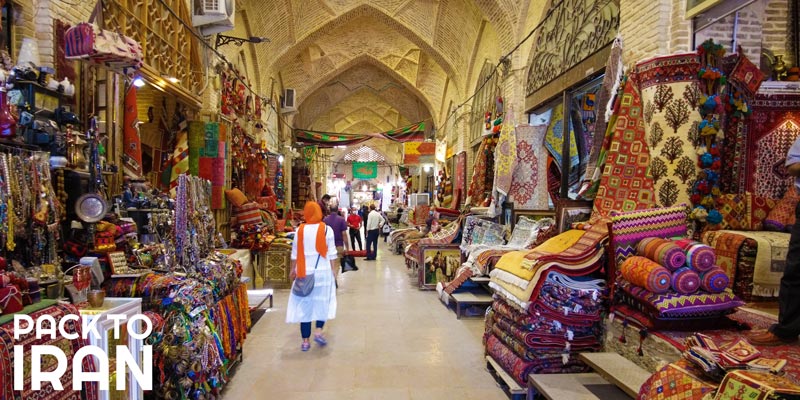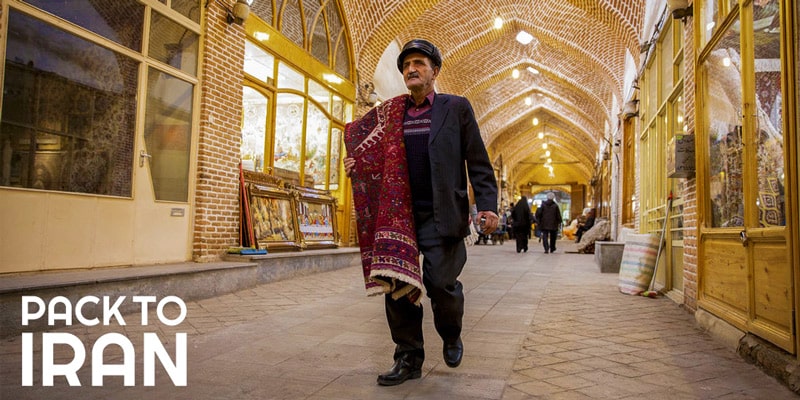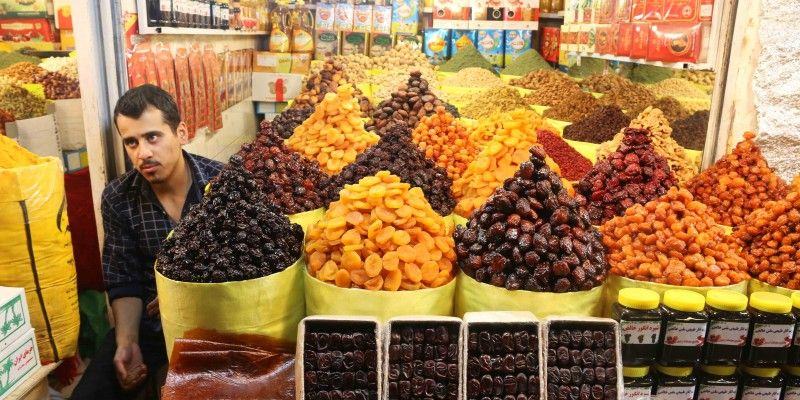If you are going to take best out of your World Cup trip and travel to neighbour countries like Iran after Qatar World Cup 2022, when Iranian government is going to allow World Cup fans travel in Iran without visa for 20 days, and offer good travel services like flights and ferries, you are going to enjoy visiting wonderful attractions in Iran like historical mosques, amazing ancient heritages, and also traditional bazaars of Iran in top touristic cities of Iran.
It could be claimed that no country in the world has so many attractive traditional bazaars with such wonderful architecture and historical values like Iran. Traditional bazaars of Iran are the beating heart of cities, where you can get acquainted with locals’ lifestyle, as bazaars have been places for cultural interactions and even cultural events.
Bazaar of Tabriz
Traditional Bazaars of Iran throughout history
By exploring the history of Iran we see that a bazaar was one of the most significant elements of old Iranian cities, and that is why traditional bazaars were not only places for transactions and business, but also places where many political and social events and even revolutions were happened. Bazaars in Iran were formed by people since very first civilizations were formed in Iran. The concept of Bazaar was first created in Iran during the reign of Medes in Iran, and then the first bazaars were built in Iran during the Achaemenid Empire and the first bazaars with similar architectural design to Islamic bazaars, were constructed during Sassanid era, a period in history of Iran with so much effect on Islamic art.
Safavid Era; Heyday of Iranian Bazaars
The zenith of traditional bazaars of Iran was during the Safavid era (16th – 17th centuries), and most of what we have today as historical bazaars of Iran with amazing architecture and ornaments is related to Safavid era and Qajar era (18th century).
Bazaar of Kashan
Architectural features of traditional bazaars of Iran
By wandering through the bazaars of Iran, you will see that most of traditional bazaars are roofed building with different halls (Saray) and corridors. Each part of a bazaar calld Saray is used by the masters of a special field and business, that you can explore by walking through the bazaars. The stores that usually have the same shape and size are built along the corridors (Rasteh) and walking by them feels like traveling back in time. The traditional bazaars of Iran are usually characterized with their ceilings that are usually dome-shaped and are ornamented with mesmerizing brickwork, especially the ceiling of the intersections where four corridors meet.
.jpg)
Vakil Bazaar of Shiraz
Since bazaars were the main core of historical cities, other important buildings of the cities were built around the bazaars. That is why the Jameh mosques, historical caravanserais, traditional bathhouses and schools are located near the bazaars or even inside the bazaars as a part of a historical complex.
Vakil Bazaar of Shiraz
Traditional bazaars to visit in Iran
Since in most of the cities of Iran historical bazaars are located in the heart of touristic zone of the city, visiting these amazing monuments is a part of your city tours in Iran, especially in touristic cities like Isfahan, Yazd, Shiraz. From the north to south of Iran, there are many traditional bazaars in Iran that should be visited.
Tabriz Grand Bazaar
One of the most important bazaars and the only UNESCO listed bazaars in Iran is the wonderful bazaar of Tabriz, a city in northwest of Iran. This bazaar is also known as the longest roofed bazaar in the world. The domes and arcs of Tabriz Bazaar, its Sarays, schools and mosques, and also the booming business that goes on here, has made this bazaar one of the top bazars in whole world. Tabriz grand Bazaar has 5500 stores, 20 rasteh (corridor), 35 sarays with schools, caravanserais, bathhouse, etc.
.jpg)
Bazaar of Tabriz
Yazd Traditional Bazaar
Travelling to Yazd, known as the city of sunlight and the oldest adobe city of the world, would not be complete without buying some souvenirs of the city like its world known sweets, and Termeh textiles, and other handicrafts at Yazd traditional bazaar. This bazaar is stretched on two sides of Amirchakhmaq Square and includes different parts including Zargar ha Bazaar (gold sellers), Bazar Mes gar ha (copper works), Bazaar Qeisariyeh, Bazaar e Khan, and Bazaar e Haji Ghanber.
Qazvin Traditional Bazaar
Qazvin is one of the historical cities of Iran with many cultural attractions and it was the capital of Iran during the Safavid era. the traditional bazaar of Qazvin is one of the most important architectural heritages of Iran and charachterized with its amazing stucco work and tile works. One of the most famous parts of Qazvin Traditional Bazaar is the Saad o Saltaneh Seray and also historical caravanserai which is known as the largest roofed caravanserai in the world.


.jpg)
.jpg)
.jpg)




